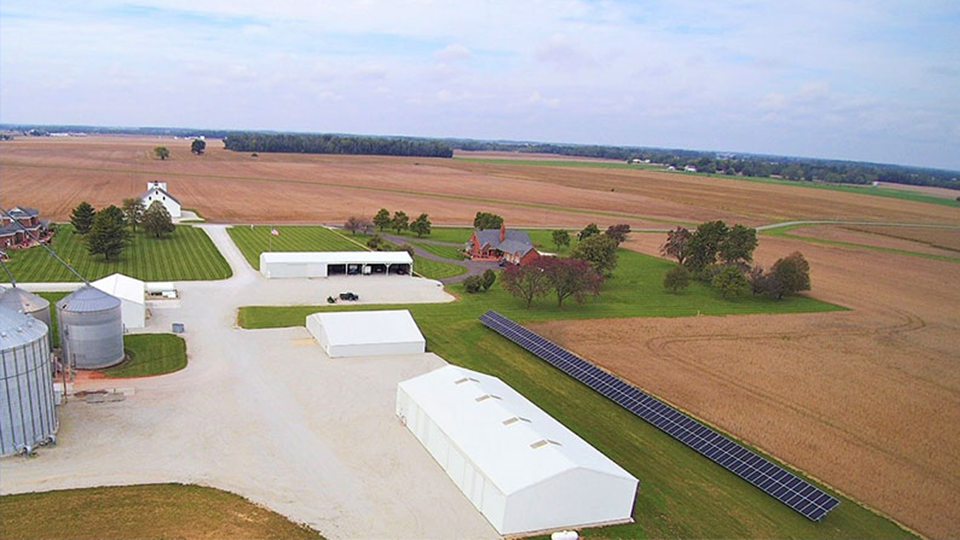Hoosier Company Implements First Microgrid System
Subscriber Benefit
As a subscriber you can listen to articles at work, in the car, or while you work out. Subscribe Now
A West Lafayette-based company has completed a unique solar microgrid system in Decatur County. Emergent Solar Energy, which is based out of the Purdue Research Park, says the system includes a 65-kilowatt, bifacial ground-mount solar array, 30-kilowatt energy storage capacity, and a natural gas and propane backup generator. The system was developed for the Corya System PCF crop production facility near Greensburg and Emergent Managing Partner Jeremy Lipinski says he believes more farm operations will gravitate toward microgrid systems.
Lipinski says having an energy storage component is crucial to addressing intermittency issues inherent with only having solar generation.
“You have batteries – in this case, lithium-ion batteries – that can store the renewable energy throughout the day and then discharge at times when there is either not enough solar energy to run the operation or it can be utilized for other purposes as well, such as demand reduction,” said Lipinski. “That, along with the gas-powered generator, you have multiple inputs that would generally be considered cleaner and certainly, less carbon-producing than energy pulled from the [grid].”
P. David Corya, general manager of the Corya System, tapped Emergent to develop the microgrid system. In addition to the energy generation and storage components, the system includes two electric vehicle charging stations, which will be used as the farm’s gas-powered vehicles are replaced with EVs.
Corya says he wanted to implement the system for several reasons.
“From an economic perspective, the project offsets traditional grid usage and insulates our operation from rising energy prices, creating a significant and growing cost of production advantage, while enabling additional future cost savings from electric vehicle fleet conversion,” Corya said in written remarks. “From a sustainability perspective, we are committed to stewardship practices that protect air, soil, water and wildlife. We use the best available technology to manage our properties and utilize management practices that protect and conserve natural resources for the benefit of future generations.”
Lipinski says he sees the entire agriculture sector moving more toward electrification both with the increased use of electric vehicles and power generation.
He says it’s becoming particularly useful for farmers looking to mitigate demand charges.
“Usually, when you have a large grain storage system on a production facility, that requires a tremendous amount of electricity and it’s a very spiky load,” said Lipinski. “It runs at full tilt during the fall and winter months and then drops off to near zero after they’ve moved the grain out. But, when it comes on, it’s a tremendous demand.”
Utilities have different ways to bill farm operations, including for kilowatt hours and demand. Lipinski says solar can offset the kilowatt hour charges, but the challenge for his company is figuring out how to offset the demand charges.
“You can only do that by other means of inputs of power or storage, and that’s where we’re getting to. As the cost to design, install, manufacture these storage systems goes down, then more and more operations can use that technology.”
Lipinski says having an energy storage component is crucial to addressing intermittency issues inherent with only having solar generation.
Lipinski says he sees the entire agriculture sector moving more toward electrification both with the increased use of electric vehicles and power generation.
